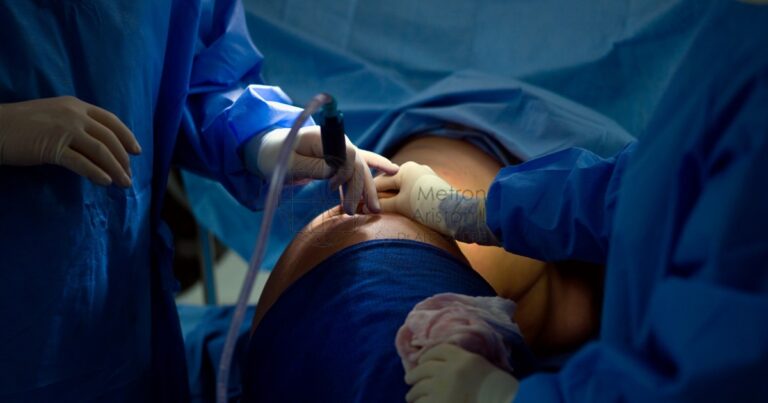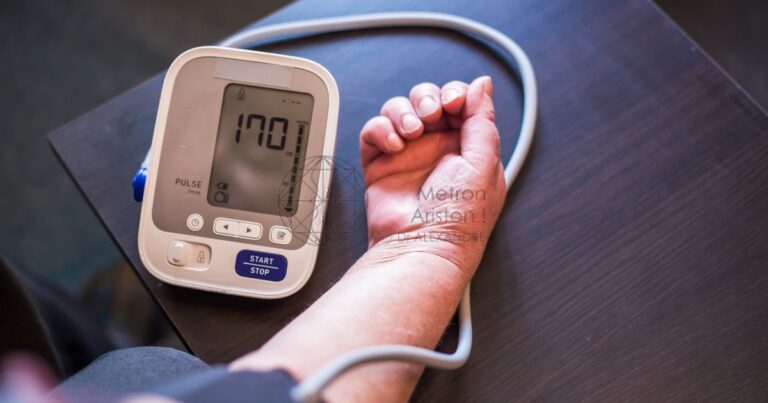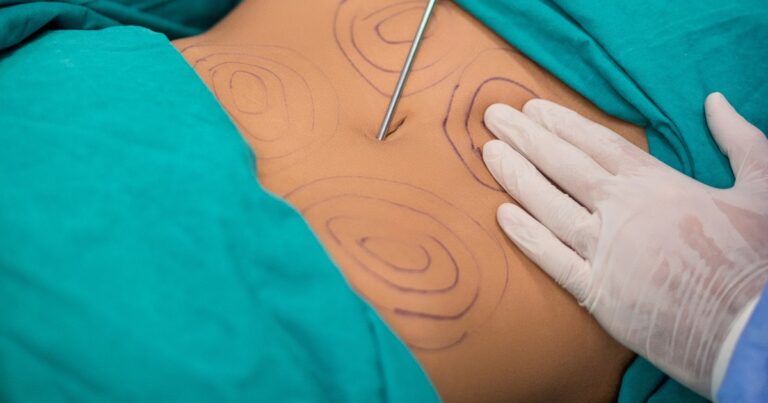Addressing Lipo Fibrosis and Uneven Liposuction Results
Can Uneven Lipo Be Fixed
Understanding Lipo Fibrosis and Its Causes
Lipofibrosis is a condition that can occur after liposuction. In this condition, fibrous tissue forms in the treated area, leading to hard, uneven lumps. This can be caused by improper surgical techniques, inadequate post-operative care, or the body’s natural healing response. Understanding the root causes is essential for effective treatment.
- Improper Surgical Techniques: Surgeons must be skilled and experienced to avoid causing trauma that leads to fibrosis.
- Inadequate Post-Operative Care: Proper care, including compression garments and massages, can prevent fibrosis.
- Natural Healing Response: Some individuals are more prone to fibrosis due to their body’s healing mechanisms.
Reversing Lipo Fibrosis Through Non-Invasive Treatments
Non-invasive treatments can help reverse lipofibrosis. These methods focus on breaking down fibrous tissue and improving skin texture without the need for additional surgery.
- Manual Lymphatic Drainage: This massage technique helps reduce swelling and break down fibrous tissue.
- Ultrasound Therapy: High-frequency sound waves can penetrate the skin to soften and break down fibrosis.
- Radiofrequency Treatments: These use heat to stimulate collagen production and improve skin texture.
Correcting Uneven Liposuction Results
Uneven liposuction results can be distressing, but they can often be corrected through various methods. The approach depends on the extent of the irregularities and the patient’s overall health.
- Assessing the Extent of Unevenness: A thorough evaluation by a qualified surgeon is crucial to determine the best corrective approach.
- Revision Liposuction Techniques: Additional liposuction can be performed to even out the treated areas.
- Non-Surgical Options for Minor Irregularities: Fillers or fat grafting can be used to smooth out minor unevenness.
The Science Behind Lipo Fibrosis
How Fibrosis Develops After Liposuction
Fibrosis develops when the body’s healing process goes into overdrive, producing excess fibrous tissue. This can happen due to surgical trauma, inflammation, or inadequate post-operative care.
- Surgical Trauma: Excessive tissue manipulation can lead to fibrosis.
- Inflammation: Persistent inflammation can trigger fibrous tissue formation.
- Inadequate Post-Operative Care: Lack of proper care can exacerbate fibrosis.
Impact of Fibrosis on Skin Texture and Appearance
Fibrosis can significantly affect the skin’s texture and appearance, leading to hard, uneven lumps and a less smooth contour. This can be both physically and emotionally distressing for patients.
- Hard, Uneven Lumps: Fibrosis can create noticeable lumps under the skin.
- Less Smooth Contour: The overall appearance of the treated area can be compromised.
- Emotional Distress: The physical changes can lead to decreased self-esteem and confidence.
Prevalence of Lipo Fibrosis
According to a study published by the National Institutes of Health (NIH), approximately 10-15% of liposuction patients experience some degree of fibrosis. This statistic highlights the importance of proper surgical techniques and post-operative care.
Effective Treatments for Lipo Fibrosis
Manual Lymphatic Drainage
Manual lymphatic drainage (MLD) is a specialized massage technique that helps reduce swelling and break down fibrous tissue. It is often recommended as part of the post-operative care regimen.
- Reduces Swelling: MLD helps to move excess fluid out of the treated area.
- Breaks Down Fibrous Tissue: The gentle massage can help soften and break down fibrosis.
- Improves Healing: MLD promotes better overall healing and recovery.
Ultrasound Therapy
Ultrasound therapy uses high-frequency sound waves to penetrate the skin and target fibrous tissue. This non-invasive treatment can help soften and break down fibrosis, improving skin texture.
- Penetrates Skin: Ultrasound waves can reach deep into the tissue.
- Softens Fibrous Tissue: The therapy helps to soften and break down fibrosis.
- Non-Invasive: Ultrasound therapy is a non-surgical option with minimal downtime.
Radiofrequency Treatments
Radiofrequency (RF) treatments use heat to stimulate collagen production and improve skin texture. This can help reduce the appearance of fibrosis and create a smoother contour.
- Stimulates Collagen Production: RF treatments encourage the body to produce more collagen.
- Improves Skin Texture: The heat helps to smooth out the skin.
- Non-Surgical: RF treatments are non-invasive and require minimal recovery time.
Dr Alexandre’s Specialized Approach
Dr. Alexandre has developed a specialized approach to treating lipo fibrosis. He combines various non-invasive techniques to achieve optimal results. His method focuses on personalized care and comprehensive treatment plans.
- Personalized Care: Each patient receives a customized treatment plan.
- Comprehensive Treatment: Multiple modalities are used to address fibrosis.
- Optimal Results: Dr Alexandre’s approach aims for the best possible outcomes.
Reversing Uneven Liposuction Results
Assessing the Extent of Unevenness
A thorough assessment by a qualified surgeon is essential to determine the extent of unevenness and the best corrective approach. This evaluation includes a physical examination and possibly imaging studies.
- Physical Examination: The surgeon will examine the treated area to assess the irregularities.
- Imaging Studies: Ultrasound or other imaging techniques may be used to get a detailed view.
- Customized Plan: Based on the assessment, a personalized treatment plan is created.
Revision Liposuction Techniques
Revision liposuction involves additional liposuction procedures to correct uneven results. This technique requires a skilled surgeon to ensure the best possible outcome.
- Additional Liposuction: More fat is removed or redistributed to even out the treated area.
- Skilled Surgeon: A highly experienced surgeon is crucial for successful revision.
- Improved Contour: The goal is to achieve a smoother, more even contour.
Non-Surgical Options for Minor Irregularities
For minor irregularities, non-surgical options such as fillers or fat grafting can be effective. These methods are less invasive and can provide satisfactory results with minimal downtime.
- Fillers: Injectable fillers can smooth out minor unevenness.
- Fat Grafting: Fat from another part of the body is used to fill in irregular areas.
- Minimal Downtime: These non-surgical options require less recovery time.
Prevention Strategies for Lipo Fibrosis
Proper Post-Operative Care
Proper post-operative care is crucial in preventing lipo fibrosis. This includes following the surgeon’s instructions, attending follow-up appointments, and taking care of the treated area.
- Follow Instructions: Adhering to the surgeon’s guidelines is essential.
- Attend Follow-Up Appointments: Regular check-ups help monitor healing.
- Care for Treated Area: Proper care can prevent complications like fibrosis.
Importance of Compression Garments
Compression garments play a vital role in the recovery process. They help reduce swelling, support the treated area, and prevent the formation of fibrous tissue.
- Reduces Swelling: Compression garments help minimize swelling.
- Supports Treated Area: They provide support to the healing tissues.
- Prevents Fibrosis: Proper compression can prevent the formation of fibrous tissue.
Lifestyle Factors Affecting Recovery
Lifestyle factors such as diet, exercise, and smoking can significantly impact the recovery process. Maintaining a healthy lifestyle can promote better healing and reduce the risk of fibrosis.
- Healthy Diet: A balanced diet supports the body’s healing process.
- Regular Exercise: Gentle exercise can improve circulation and aid recovery.
- Avoid Smoking: Smoking can impair healing and increase the risk of complications.
Advanced Technologies in Lipo Fibrosis Treatment
Shockwave Therapy
Shockwave therapy uses high-energy sound waves to break down fibrous tissue and stimulate healing. This advanced technology can be effective in treating lipofibrosis.
- High-Energy Sound Waves: These waves penetrate deep into the tissue.
- Breaks Down Fibrous Tissue: Shockwave therapy helps to soften and break down fibrosis.
- Stimulates Healing: The treatment promotes better overall healing.
Laser-Assisted Lipolysis
Laser-assisted lipolysis uses laser energy to target and break down fibrous tissue. This minimally invasive procedure can improve skin texture and reduce the appearance of fibrosis.
- Laser Energy: The laser targets fibrous tissue.
- Breaks Down Fibrosis: The energy helps to soften and break down fibrous tissue.
- Minimally Invasive: The procedure requires minimal recovery time.
Cryolipolysis for Stubborn Areas
Cryolipolysis, also known as fat freezing, can be used to treat stubborn areas of fibrosis. This non-invasive treatment freezes and breaks down fibrous tissue, improving skin texture.
- Fat Freezing: Cryolipolysis targets and freezes fibrous tissue.
- Breaks Down Fibrosis: The cold temperature helps to break down fibrous tissue.
- Non-Invasive: The treatment is non-surgical and requires minimal downtime.
Combining Treatments for Optimal Results
Customized Treatment Plans
Customized treatment plans are essential for achieving optimal results in treating lipo fibrosis. Each patient requires a personalized approach based on their specific needs and condition.
- Personalized Approach: Each treatment plan is tailored to the patient’s needs.
- Specific Needs: The plan addresses the unique aspects of the patient’s condition.
- Optimal Results: Customized plans aim for the best possible outcomes.
Synergistic Effects of Multiple Modalities
Combining multiple treatment modalities can have synergistic effects, enhancing the overall results. This approach can be more effective than using a single treatment method.
- Enhanced Results: Combining treatments can improve overall outcomes.
- Multiple Modalities: Different methods are used to address various aspects of fibrosis.
- Synergistic Effects: The combined approach can be more effective.
Timeline for Visible Improvements
The timeline for visible improvements varies depending on the severity of fibrosis and the treatments used. Patients can expect to see gradual improvements over several weeks to months.
- Gradual Improvements: Results become more noticeable over time.
- Several Weeks to Months: The timeline depends on the treatments and severity.
- Patient Patience: Patience is essential for achieving the best results.
Recovery and Aftercare Post-Treatment
Managing Expectations
Managing expectations is crucial for a successful recovery. Patients should understand that results take time and that multiple treatments may be necessary.
- Understanding Timeframes: Results take time to become visible.
- Multiple Treatments: Several sessions may be needed for optimal results.
- Realistic Expectations: Patients should have realistic expectations about the outcomes.
Follow-up Procedures
Regular follow-up procedures are essential to monitor progress and make any necessary adjustments to the treatment plan. These appointments help ensure the best possible outcomes.
- Monitor Progress: Follow-up appointments track the patient’s progress.
- Adjust Treatment Plan: Adjustments can be made based on the patient’s needs.
- Ensure Best Outcomes: Regular follow-ups help achieve the best results.
Long-term Maintenance Strategies
Long-term maintenance strategies are essential to sustain the results of the treatment. This includes ongoing care, healthy lifestyle choices, and regular check-ups. Liposuction liver benefits can help remove excess fat from the liver This may improve liver function and overall health for some people Liposuction limitations hips Liposuction can remove fat from hips but it cannot tighten loose skin or change bone structure Some people may not see desired results due to these limitations
Liposuction impacts diabetes by removing fat cells that produce hormones affecting blood sugar levels This can lead to improved insulin sensitivity and better blood sugar control in some patients Liposuction diabetes benefits can help remove fat from the body which may improve how the body uses insulin Some studies show that people with diabetes might have better blood sugar control after liposuction
Liposuction cellulite inefficient because it removes fat but doesn’t fix the skin’s structure This means the dimpled appearance of cellulite often remains even after the procedure Liposuction fitness consequences Removing fat through surgery does not improve overall fitness and may lead to weight gain if healthy habits are not maintained after the procedure
Chin lipo beverages are special drinks that claim to help reduce fat under the chin These drinks are marketed as a way to get a slimmer jawline without surgery UAE cosmetic surgery offers advanced beauty treatments to enhance appearance People visit
Liposuction scars fade over time as your body heals The small marks from the procedure become less noticeable with proper care
- Ongoing Care: Continued care is necessary to maintain results.
- Healthy Lifestyle: A healthy lifestyle supports long-term success.
- Regular Check-Ups: Regular appointments help monitor and maintain results.
Psychological Impact of Lipo Fibrosis and Uneven Results
Addressing Body Image Concerns
Lipo fibrosis and uneven results can significantly impact a patient’s body image and self-esteem. Addressing these concerns is an essential part of the recovery process.
- Body Image: The physical changes can affect how patients see themselves.
- Self-Esteem: Uneven results can lead to decreased self-confidence.
- Emotional Support: Providing emotional support is crucial for recovery.
Support Systems During Recovery
Having a strong support system during recovery can make a significant difference. Friends, family, and healthcare professionals can provide the necessary emotional and practical support.
- Emotional Support: Friends and family can offer emotional encouragement.
- Practical Support: Assistance with daily tasks can be helpful.
- Healthcare Professionals: Regular check-ins with healthcare providers are essential.
Building Confidence Through Successful Treatment
Successful treatment of lipo fibrosis and uneven results can help rebuild a patient’s confidence. Seeing improvements can boost self-esteem and overall well-being.
- Boost Self-Esteem: Successful treatment can improve self-confidence.
- Overall Well-Being: Patients feel better both physically and emotionally.
- Positive Outlook: Improved results lead to a more positive outlook on life.
By following this comprehensive guide, patients can better understand their options for addressing lipo fibrosis and uneven liposuction results. With the right treatments and support, achieving a smoother, more even contour is possible.
Frequently Asked Questions:
How long does lipo fibrosis last?
If left untreated, lipo fibrosis can last several months to years . The duration depends on the severity of the fibrosis and the effectiveness of the treatment. Early intervention can significantly reduce the duration and improve outcomes.
Can massage help with lipo fibrosis?
Yes, massage can help with lipo fibrosis. Techniques like manual lymphatic drainage can reduce swelling and break down fibrous tissue. Regular massages as part of post-operative care can prevent and treat fibrosis effectively.
What does lipo fibrosis feel like?
Lipo fibrosis feels like hard, uneven lumps under the skin. These lumps can be tender or painful to touch and may cause discomfort. The affected area may also feel tight and less flexible.
How do you get rid of fibrosis after liposuction?
Getting rid of fibrosis after liposuction involves a combination of treatments. Non-invasive methods like manual lymphatic drainage, ultrasound therapy, and radiofrequency treatments are effective. In severe cases, surgical intervention may be necessary.








